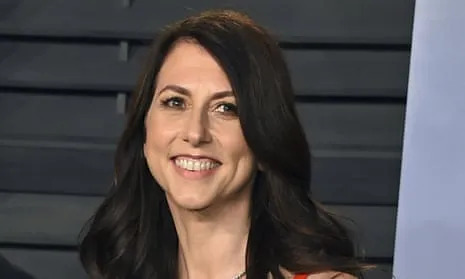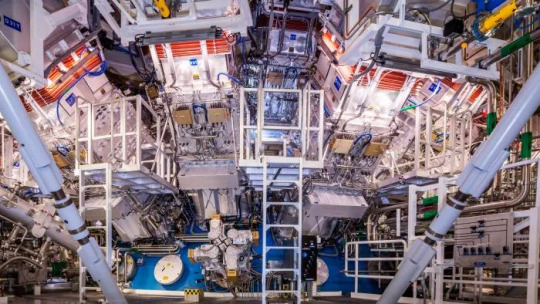#Skin Cancer Breakthrough
Text
Virginia High School Freshman Wins Top Young Scientist Award for Skin Cancer Breakthrough
https://headlinehorizon.com/Science/Natural%20Science/1062
Read the latest news on Heman Bekele, a high school freshman who has made a remarkable breakthrough in the field of skin cancer treatment. Discover how his soap-making innovation could potentially revolutionize the prevention and treatment of skin cancer.
#Virginia High School Freshman#Skin Cancer Treatment#Top Young Scientist Award#Skin Cancer Breakthrough#Headline Horizon#News#Latest News
0 notes
Text
Researchers have made a significant breakthrough in the development of an on-skin bioelectronic wearable sensor: the addition of wireless charging—without batteries—through a magnetic connection.
The team’s innovation, an important component to its existing ultrasoft, breathable, and stretchable material, provides the foundation for gathering precise vital sign measurements like blood pressure, electrical heart activity, and skin hydration.
The discovery could one day lead to early detection and timely interventions for chronic diseases such as heart disease, cancer, and diabetes.
Continue Reading.
72 notes
·
View notes
Text
The Best News of Last Week - December 19, 2022
1. Biden to sign Respect for Marriage Act, reflecting his and the country's evolution

President Biden signed into law Tuesday a bipartisan bill that codifies same-sex and interracial marriages with a large celebration on the South Lawn of the White House.
The president spoke before a crowd of thousands gathered to celebrate the federal protections in the Respect for Marriage Act.
"The road to this moment has been long, but those who believe in equality and justice – you never gave up," Biden said.
2. MacKenzie Scott reveals details of her $14bn in donations to 1,600 non-profits

She has signed pledge promising to give away over half of her wealth. The billionaire philanthropist MacKenzie Scott's donations have yielded more than $14bn for about 1,600 non-profits since 2019, according to her new website Yield Giving, which was unveiled on Wednesday night.
3. A stranger on a plane gave two girls fleeing civil war $100. Decades later, they reunited.

This is so heartwarming! I’m so glad they’re able to meet again!
Ayda Zugay was a nearly 12-year-old refugee fleeing the former Yugoslavia with her older sister when a stranger handed them the envelope on a flight to the United States in 1999. The woman made them promise not to open it until they got off the plane. The girls were later shocked to discover dangly earrings and a $100 bill inside.
A note scribbled on the outside of the envelope is signed with only a first name — Tracy. And for almost a decade, Zugay says she's been trying to find her.
After years, her message finally made it to Tracy Peck of Blaine, Minnesota. Her daughter reached out to Zugay: "You are looking for my mom Tracy Peck! Her handwriting is unmistakable. She remembers you girls from the flight!"
4. US scientists boost clean power hopes with fusion energy breakthrough

US government scientists have made a breakthrough in the pursuit of limitless, zero-carbon power by achieving a net energy gain in a fusion reaction for the first time, according to three people with knowledge of preliminary results from a recent experiment.
Physicists have since the 1950s sought to harness the fusion reaction that powers the sun, but no group had been able to produce more energy from the reaction than it consumes
5. Cancer mRNA vaccine completes pivotal trial

Researchers say they have successfully completed a trial of a personalised cancer vaccine that uses the same messenger-RNA technology as Covid jabs. The experimental vaccine, made by Moderna and MSD, is designed to prime the immune system to seek and destroy cancerous cells.
Doctors hope work such as this could lead to revolutionary new ways to fight skin, bowel and other types of cancer. Moderna and MSD called it "a new paradigm" moment.
6. Historic ban on shark fin trade poised to become U.S. law

The U.S. is poised to ban the lucrative trade in shark fins, a move conservationists hope will help protect millions of sharks that are butchered every year to satisfy demand in China and other parts of Asia.
The practice of shark finning, whereby sharks are caught for their fins and their carcasses then dumped back into the ocean, has been banned in U.S. waters for decades. But the U.S. remains a major hub for the brisk trade where the fins of as many as 73 million sharks are cut off around the world each year.
7. Ukraine says power restored to almost 6 million people in last 24 hours

Ukraine has managed to restore power to almost 6 million people in the last 24 hours after massive Russian strikes against the electricity generating system, President Volodymyr Zelenskiy said on Saturday.
"Repair work continues without a break after yesterday's terrorist attack," he said in a video address.
...
That's it for this week. If you liked this post you can support this newsletter with a small kofi donation:
Buy me a coffee ❤️
Have a great week ahead :)
349 notes
·
View notes
Text
De-extinction startup Colossal Biosciences wants to bring back the woolly mammoth. Well, not the woolly mammoth exactly, but an Asian elephant gene-edited to give it the fuzzy hair and layer of blubber that allowed its close relative to thrive in sub-zero environments.
To get to these so-called “functional mammoths,” Colossal’s scientists need to solve a whole bunch of challenges: making the right genetic tweaks, growing edited cells into fully formed baby functional mammoths, and finding a space where these animals can thrive. It’s a long, uncertain road, but the startup has just announced a small breakthrough that should ease some of the way forward.
Scientists at Colossal have managed to reprogram Asian elephant cells into an embryonic-like state that can give rise to every other cell type. This opens up a path to creating elephant sperm and eggs in the lab and being able to test gene edits without having to frequently take tissue samples from living elephants. The research, which hasn’t yet been released in a peer-reviewed scientific journal, will be published on the preprint server Biorxiv.
There are only around 30,000 to 50,000 Asian elephants in the wild, so access to these animals—and particularly their sperm and eggs—is extremely limited. Yet Colossal needs these cells if they’re going to figure out how to bring their functional mammoths to life. “With so few fertile female elephants, we really don’t want to interfere with their reproduction at all. We want to do it independently,” says George Church, a Harvard geneticist and Colossal cofounder.
The cells that Colossal created are called induced pluripotent stem cells (iPSCs), and they behave a lot like the stems cells found in an embryo. Embryonic stem cells have the ability to give rise to all kinds of different cell types that make up organisms—a quality that scientists call pluripotency. Most cells, however, lose this ability as the organism develops. Human skin, for instance, can’t spontaneously turn into muscle or cells that line the inside of the intestine.
In 2006, the Japanese scientist Shinya Yamanaka showed it was possible to take mature cells and turn them back into a pluripotent state. Yamanaka’s research was in mice cells, but later scientists followed up by deriving iPSCs for lots of different species, including humans, horses, pigs, cattle, monkeys, and the northern white rhino—a functionally extinct subspecies with only two individuals, both females, remaining in the wild.
Reprogramming Asian elephant cells into iPSCs proved trickier than with other species, says Eriona Hysolli, head of biological sciences at Colossal. As with other species, the scientists reprogrammed the elephant cells by exposing them to a series of different chemicals and then adding proteins called transcription factors that turn on particular genes to change how the cells functions. The whole process took two months, which is much longer than the 5 to 10 days it takes to create mouse iPSCs or the three weeks for human iPSCs.
This difficulty might have to do with the unique biology of elephants, says Vincent Lynch, a developmental biologist at the University at Buffalo in New York who wasn’t involved in the Colossal study. Elephants are the classic example of Peto’s paradox—the idea that very large animals have unusually low rates of cancer given their size. Since cancer can be caused by genetic mutations that accumulate as cells divide, you’d expect that animals with 100 times more cells than humans would have a much higher risk of cancer.
But elephants have cancer rates even lower than humans—a surprising fact given their vast size. One hypothesis for elephants’ cancer-defying biology is that they carry lots of copies of a tumor-suppressing gene called P53. Humans, on the other hand, only have one copy of this gene.
P53 is good for elephant health, but it could be the reason that up until now scientists have struggled to create iPSCs from elephant cells, Lynch says. One way the gene seems to work is by stopping cells from entering a state where they can duplicate indefinitely, which is one of the key features of iPSCs.
Hysolli says that she’d like to reduce the time it takes to create elephant iPSCs, and refine the process so the Colossal team can produce them at a greater scale. The iPSCs will be particularly useful if Colossal’s scientists can turn them into sperm and egg cells, something that Hysolli’s team is already working on. Since there is a relatively limited supply of elephant eggs and sperm, one problem facing the de-extinction project is getting enough genetic diversity to support a population of functional mammoths—develop them from too few individuals, and you risk the negative effects of inbreeding. Being able to create sperm and egg cells in the lab should help with that, Church says.
These cells could also be useful for conservation work, Hysolli says. Colossal has partnered with researchers working on elephant endotheliotropic herpes virus (EEHV), a leading cause of death for young Asian elephants. The iPSCs could be a good way to figure out how the virus infects different cell types. The cells will also be useful for testing whether Colossal’s edits to produce mammoth-like fur and fat layers are working as scientists hope.
“I have no doubt that given enough time and money they will overcome the technical challenges of making a woolly-mammoth-looking elephant,” says Lynch. But he’s less convinced of the ecological benefits of de-extinction. The startup intends to introduce the elephant-mammoth hybrids into the wild to re-create the role once played by the mammoth in the Arctic ecosystem, grazing the land and trampling snow cover, potentially decelerating the melting of permafrost.
“How many hairy Asian elephants do you need to make that work?” Lynch asks. Whether there really is a niche for edited elephants in the Arctic 4,000 years after mammoths last roamed the area is a question that conservationists are still grappling with. Sure, scientists might be able to create mammoth-like Asian elephants, but whether we should is open to much debate.
Colossal’s scientists will be glad if they get to that point. Although they have elephant iPSCs, much of the work of creating elephant-mammoth hybrids is ahead of them. They must figure out how to create elephant sperm and egg cells, master the right edits to tweak their elephants, and take their creation through the 22-month Asian elephant gestation period. And then they have to do it enough times to build a population that can actually deliver on some of their ecological aims.
“It feels very significant,” Church says of the iPSC breakthrough. “This is a very big deal.” If Colossal is going to deliver on its de-extinction mission, then there will be many other moments like this ahead.
6 notes
·
View notes
Photo

These are the current planet transits that affect your relation:
Saturn is transiting in Pisces
Sun is transiting in Capricorn
Pluto is transiting in Capricorn
Chiron is transiting in Aries
North Node Retrograde is transiting in Aries
Venus is transiting in Scorpio
Mars is transiting in Sagittarius
Jupiter Retrograde is transiting in Taurus
Uranus Retrograde is transiting in Taurus
Moon is transiting in Cancer
Mercury Retrograde is transiting in Sagittarius
Neptune is transiting in Pisces
Searching for what sparks that Aquarius fire during these cosmic dances? Here's a clue-in to the 3 things that really get under their skin (in a good way, of course!). ✨
Brain Teasers & Bold Dialogues 🧠: Aquarius folks are all about the mind games—not the heartache kind, but the ones that stretch their understanding. They're vibing with new ideas and perspectives, especially now. Drop a book recommendation that changes the world view, or engage them in a debate on the latest AI breakthrough—watch the sparks fly!
Emotional Deep Dives & Real Talks 💘: Superficial chat? Next, please. Aquarians are on a quest for connections that cut deep. Think heart-to-heart on a moonlit walk or a soul-baring art session. They crave those moments when masks come off, and every story is raw & real.
Change-makers & Trailblazers 🔥: Passion for change? That's their middle name. Aquarius is all in for causes that push boundaries and ignite social change. Start a revolution, big or small, and you have their full, undivided attention. Be the voice, be the change, be the fire they're drawn to.
Ready to dive deeper into your Aquarius allure? The stars await at Sibyl's Guide—your cosmic roadmap to personal discoveries and astrological wonders.
#astrology#horoscopes#zodiac#horoscope#astrology notes#astrologer#zodiacsigns#witchcraft#love#virgo#leo#scorpio#libra#aries#astrologyposts#astrology signs#astro#astrology planets#cancer#astrology community#pisces#gemini#capricorn#aquarius#taurus#sagittarius#transits#witchblr#synastry#moon
4 notes
·
View notes
Photo

In 1992 Mike Burrows, who has died age 79 of cancer, watched Chris Boardman win the 4,000-metre individual bicycle pursuit final at the Barcelona Olympics. Boardman was riding the Lotus 108 model that Mike had developed with Lotus Engineering, and the combination won Britain its first Olympic gold medal in the sport for 72 years.
Mike’s background as an engineer lay in running his own company in Norwich in the 1970s, producing packaging machines. When his car broke down he took to cycling, devising his own recumbent bicycles and tricycles, with the rider lying back for optimal aerodynamics and having the pedals in front, rather than below.
He considered that the bicycle’s established form was too widely taken as given, to the detriment of innovation. The increasing interest in a wide range of human-powered vehicles in the 1980s liberated his imagination to the point that he could joke: “I’m not the best bicycle designer in the world, I’m the only bicycle designer in the world.”
His breakthrough came from looking beyond the metal – usually steel – tubes that bicycles were conventionally made of. A friend’s father in the aviation industry supplied him with some off-cuts of carbon fibre.
Impregnated with resin, this could be moulded into a strong aerodynamic shape, ideal for track racing. The term monocoque is used for a structure whose loads and forces are held together within a single skin, and Mike said that the imaginative leap needed for his novel vehicle came from seeing a sculpture by Barbara Hepworth.
When, in 1985, the British Cycling Federation put Mike’s monocoque bicycle to the sport’s governing body, the Union Cycliste Internationale (UCI), based in Switzerland, it was rejected. But Mike’s friend Rudy Thomann, who worked for Lotus, got the car manufacturer interested, and in 1990 approval was secured from the UCI.
Unlike most people in the bicycle industry at the time, Mike paid constant attention to aerodynamics. The wind-tunnel testing of the Lotus bicycle indicated time advantages against a regular bicycle similar to those by which Boardman went on to victory over the German pursuit world champion, Jens Lehmann.
The 1992 triumph was not celebrated by the UCI. Mike appreciated concerns that expensive bikes built for rich-world athletes gave unfair advantage, but was convinced that if an event such as the Tour de France could use his faster machines, built on monocoques and aerodynamics, for even its prologue or a time trial, it would showcase the bicycle as a cutting-edge vehicle of the future, rather than of the past. Boardman rode the Lotus to a time-trial victory at the Tour in Lille in 1994, setting a record average speed that stood for more than two decades, convincing both Mike and the UCI that each was right.
That year Mike was recruited by the bicycle manufacturer Giant in Taiwan, from where he oversaw a quieter design revolution, creating the Giant TCR (Total Compact Road) model that has influenced every road bicycle since, perfecting geometries so that the same frame could be made to fit riders of different heights. The development allowed greater standardisation and thus commercialisation of road bicycles, with no compromise in frame rigidity and power. He also worked on mountain bikes and the Giant Halfway folding bike.
In 1996, the UCI produced the Lugano Charter, in effect a formal response to the success and controversy engendered by Mike’s radical designs. It ordained that the sport of cycling should be one of athletes, rather than engineers, and so put down rigid engineering limitations that were the antithesis of Mike’s quest for greater efficiency and speed. As he put it: “I left Giant in 2000 because the UCI was stopping me building better bikes. In the pro scene they are now all production-only.”
After returning from Taiwan, Mike focused on recumbent bicycles and tricycles, seeking further aerodynamic gains. He was a stalwart of the British Human Power Club, organising race track days for club championships, and took pleasure in getting faster each year by virtue of engineering gains that could outstrip his own ageing.
For all that he loved going fast, a pursuit of efficiency motivated him more than speed, and convenience was central to his affection for the engineering opportunities the bicycle afforded. I came to know him through efforts to commercialise the 8Freight, his cargo bicycle named after an old British Rail engine and designed with a relaxed position and steering intended to ensure that everyone – couriers, parents on school runs, gardeners carrying tools and earth – could take easily to it. He believed that bicycles offered the possibility of a better, more efficient society.
Mike was born in St Albans, Hertfordshire, where his father was a cabinet maker who later opened a toy shop, enabling Mike to play with model planes. After leaving school at 15, Mike worked as a machine engineer, married his wife, Tuula, and in 1969 moved to Norwich to work on boats used on the Norfolk Broads. His first engineering success was a machine that packed individual bags of crisps into multipacks, and he set up his own business. An engineering perspective that came from outside bicycle design was often credited for his future willingness to slay its sacred cows, a mission that became a defining feature of his life’s work.
All this was realised in a workshop that was a place of easels and heavy machine tools used if Mike needed to make or modify a part. He always wore overalls and wooden clogs, classical music played, and an archive of newspaper clippings, memorabilia and the bikes themselves gave the air of a living museum. When out birdwatching in the Norfolk countryside he was still open to engineering inspiration.
His book Bicycle Design: Towards the Perfect Machine (2000), went through a number of editions, its title encapsulating his commitment to the vehicle he loved.
He is survived by Tuula and their son, Paul.
🔔 Mike Burrows, bicycle designer, born 17 April 1943; died 15 August 2022
Daily inspiration. Discover more photos at http://justforbooks.tumblr.com
13 notes
·
View notes
Photo

Project: Metalbeast (1995)
With the medical breakthrough of a metal-based synthetic skin called “bio-ferron” the prospect for pioneering surgeries for burn victims and cancer patients seems set to occur but for the warped head scientist in charge…it’s a opportunist chance to reactivate a long forgotten classified project…that has been left frozen in a set of cryogenic chambers deep beneath the bowels of government laboratory. Convincing the other in the research team to start work on putting this living ‘metal’ skin on corpses, he now has the perfect test patients waiting on ice for them to work on. But there was a reason three of these stiffs in particular where left to chill. Due to an experiment gone bad these three only look human on the outside and none of them are as dead as everyone believes they are. ×
6 notes
·
View notes
Text
LATEST ADVANCEMENTS IN CANCER TREATMENT

Cancer, a formidable adversary claiming millions of lives annually, has long posed a significant challenge to medical science. However, amidst the grim statistics, recent breakthroughs are ushering in a new era of hope and progress in the battle against this relentless disease. Dr. Ashish Gupta, USA trained, American board-certified medical oncologist and Chief of Medical Oncology at Unique Hospital Cancer Centre, Dwarka India, stands at the forefront of these advancements
Cancer: A Complex Enemy
Cancer, characterized by the uncontrollable proliferation of cells within the body, remains enigmatic in its origins and elusive in its treatment. While no singular cause can be pinpointed, certain factors, such as smoking, radiation exposure, and genetic predisposition, heighten the risk of developing this formidable illness. Dr. Ashish Gupta emphasizes the importance of understanding these risk factors to navigate prevention strategies effectively.
Prevention: Navigating Risk Factors
In the quest for prevention, awareness and avoidance of these risk factors play a pivotal role. Empowering individuals with knowledge about lifestyle choices and environmental influences can mitigate the likelihood of cancer development. Dr. Ashish Gupta‘s expertise guides patients in making informed decisions to reduce their susceptibility to this disease.
Immunotherapy: Harnessing the Body’s Defenses
Immunotherapy emerges as a groundbreaking frontier in cancer treatment, leveraging the body’s own immune system to combat malignancies. This innovative approach, often integrated with conventional methods like surgery and chemotherapy, shows promise across diverse cancer types, including breast, lung, and melanoma. While hailed for its efficacy, immunotherapy may entail side effects such as fatigue and autoimmune reactions, underscoring the need for comprehensive patient care overseen by experts like Dr. Ashish Gupta.
Targeted Therapy: Precision in Action
Targeted therapy, another cutting-edge modality, zeroes in on specific genetic aberrations driving cancer growth. By thwarting molecular targets implicated in tumorigenesis, this tailored approach offers renewed hope for patients resistant to traditional treatments. With ongoing research yielding a myriad of targeted therapies, the horizon of cancer management expands exponentially under the guidance of specialists like Dr. Ashish Gupta.
Photodynamic Therapy (PDT): Illuminating New Paths
PDT illuminates the realm of cancer treatment with its light-activated approach to cell eradication. By sensitizing tumors to specialized light sources, this technique exerts precise cytotoxic effects, holding promise for various malignancies, from skin to pancreatic cancer. As an adjunct to conventional modalities, PDT enhances treatment efficacy while minimizing adverse effects, bolstering its appeal as a safe and efficacious option, endorsed by experts like Dr. Ashish Gupta.
Hyperthermia: Heating Up the Fight
Harnessing the power of heat, hyperthermia emerges as a formidable contender in the arsenal against cancer. Whether administered externally or internally, thermal energy targets and destroys cancerous cells, offering a non-invasive alternative across a spectrum of malignancies. As ongoing research refines techniques and expands applications, hyperthermia continues to carve its niche in the landscape of cancer care, guided by leaders in the field such as Dr. Ashish Gupta.
Embracing Hope: Charting a Brighter Future
As the dawn of a new era in cancer treatment unfolds, optimism pervades the medical community and instills hope in patients worldwide. With an array of innovative therapies at their disposal, clinicians stand poised to confront cancer with unprecedented precision and efficacy, led by pioneers like Dr. Ashish Gupta. With each advancement, the trajectory of this age-old battle veers closer towards triumph, illuminating a future where cancer’s grip is loosened, and lives are transformed.
Conclusion
In the relentless pursuit of a cure, the latest advancements in cancer treatment herald a paradigm shift in the fight against this formidable foe. From immunotherapy and targeted therapy to photodynamic therapy and hyperthermia, these cutting-edge modalities offer new avenues of hope and healing for patients and families affected by cancer. As research continues to push the boundaries of innovation, the promise of a brighter, cancer-free future grows ever nearer under the guidance of experts like Dr. Ashish Gupta.
#best oncologist in delhi ncr#best oncology doctor in delhi#cancer tratment in dwakra#unique cancer hospital#top oncologists in dwarka
0 notes
Text
All About the Marvels of Deep Sea Stem Cell Beauty Treatment
In the quest for eternal youth and radiant skin, the beauty industry is constantly evolving. Among the latest innovations, one breakthrough stands out: stem cell beauty treatment. But not just any stem cells—these are derived from rare fertilized eggs of deep-sea fish, thriving in the harshest conditions imaginable. This cutting-edge technology at 奈良 エステ promises a rejuvenating experience like no other, offering a luxurious and resilient complexion that transcends conventional skincare routines.
Imagine diving into the depths of the ocean, where life flourishes in extreme environments. It is here that scientists have discovered the remarkable potential of stem cells extracted from the embryos of deep-sea fish. These cells possess unique properties, honed by evolution to withstand the harsh pressures and cold temperatures of the abyss. Harnessing this natural resilience, researchers have unlocked a new frontier in skincare, bringing the benefits of deep-sea beauty to your fingertips.
The secret lies in the profound ability of these stem cells to penetrate deep into the layers of your skin, delivering unparalleled rejuvenation. Unlike conventional skincare ingredients that merely sit on the surface, these stem cells work wonders from within, stimulating cellular regeneration and promoting a youthful glow. By fostering collagen production and elastin synthesis, they help to diminish fine lines and wrinkles, restoring elasticity and firmness to your skin.
But the benefits don’t end there. Deep-sea stem cells are also renowned for their ability to enhance blood circulation, revitalizing tired and dull complexion. By improving microcirculation in the capillaries, they promote nutrient delivery to skin cells, ensuring optimal nourishment and vitality. The result? A luminous complexion that radiates health and vitality, as if lit from within by the gentle glow of the ocean depths.
Moreover, these extraordinary stem cells nurture beneficial skin bacteria, fostering a harmonious microbiome that is essential for skin health. By balancing the delicate ecosystem of your skin, they help to prevent acne, inflammation, and other common dermatological issues. Instead of merely treating symptoms, they address the root causes of skin imbalances, promoting long-term resilience and vitality.
One of the most remarkable features of deep-sea stem cell beauty treatment is its ability to shield your skin from harmful UV rays. The cytoplasm of our skin cells is particularly vulnerable to damage caused by sun exposure, leading to premature aging and skin cancer. However, the unique composition of deep-sea stem cells provides a natural defense mechanism against UV radiation, preserving the integrity of your skin’s cytoplasm and preventing photodamage.
When it comes to skincare, the pursuit of beauty is often synonymous with luxury. And what could be more luxurious than indulging in a treatment inspired by the wonders of the deep sea? With its exquisite blend of science and nature, deep-sea stem cell beauty treatment offers a truly transformative experience, elevating skincare to new heights of sophistication and efficacy.
So why settle for ordinary skincare when you can immerse yourself in the extraordinary? Come experience the marvels of deep-sea stem cell beauty treatment and discover the ultimate indulgence for your skin. With each luxurious application, you’ll feel the rejuvenating power of the ocean’s depths, unlocking a radiant complexion that defies the passage of time. Dive into luxury and embark on a journey to youthful, resilient skin that glows with the luminous beauty of the deep sea.
[Related site1] [Related site2]
0 notes
Text
Cryotherapy, traditionally associated with the treatment of musculoskeletal injuries and skin conditions, is now emerging as a potential therapeutic avenue for respiratory health, specifically targeting lung-related disorders. While cryotherapy has been widely acknowledged for its anti-inflammatory and analgesic properties, its application to the respiratory system, often referred to as "cryotherapy for lungs", is gaining attention in the medical community.
The concept involves exposing the respiratory tract to extremely cold temperatures, typically below -100 degrees Celsius, using techniques like cryoablation or inhalation of cold air. The rationale behind this approach lies in the ability of extreme cold to constrict blood vessels and reduce inflammation. In the context of lung health, this could offer relief for conditions characterized by chronic inflammation, such as asthma, chronic obstructive pulmonary disease (COPD), and even certain respiratory infections.
Research studies exploring cryosurgery for lung cancer are still in the early stages, but preliminary findings suggest promising outcomes. Pulmonary vein cryoablation, a procedure involving the use of extremely cold temperatures to destroy abnormal tissues, has shown potential in treating lung tumors. The precise application of cold to targeted areas can effectively eliminate cancerous cells while minimizing damage to surrounding healthy tissue.
In the case of inflammatory respiratory conditions, inhaling cold air during cryotherapy sessions may help soothe irritated airways and reduce the severity of symptoms. The cold air is thought to constrict the blood vessels in the lungs, decreasing blood flow and inflammation in the airways.
It's important to note that while cryotherapy lung cancer holds promise, further research is needed to establish its safety, efficacy, and optimal protocols for different respiratory conditions. The potential risks and side effects, such as bronchospasm or exacerbation of certain lung conditions, also need thorough examination.
As the field of cryotherapy continues to evolve, collaborations between pulmonologists, cryotherapy specialists, and researchers will be crucial in refining techniques and expanding our understanding of how extreme cold can be harnessed to promote lung health. The integration of cryotherapy into respiratory care could offer a novel and complementary approach to existing treatments, ushering in a new era in pulmonary medicine.
Lung Cancer Case Sharing
Case 1
Case Characteristics
(1) The lesion was close to chest wall. CT scan showed that the left upper lobe lung cancer was enlarged.
(2) After treatment by radioactive particles.
(3) No complication during and after surgery.
cryosurgery for lung cancer
Ablation-two cycles
(freezing for 20min + heating re-warming for 7min)
Reexamination 1 month after surgery
The reexamination 6 months after surgery showed complete remission (CR)
Case 2
Case Characteristics
(1) The lesion was close to chest wall, and no injury of chest wall occurred .
(2) CT scan showed that there was a lesion at the junction of S4 and S5, sized as 15.1×11.8mm.
Cryotherapy Lung Metastases
Ablation-two cycles
(freezing for 20min + heating re-warming for 7min)

1 note
·
View note
Text
Understanding the Major Benefits of Regenerative Medicine
Regenerative medicine has been capturing attention globally due to its potential to treat conditions that were previously considered untreatable. Wherein, cell therapies have been at the forefront of this medical revolution. They accounted for a significant chunk of the revenue, making up more than half of the total regenerative medicine market.
While cell therapies have been a significant driver in the Global Regenerative Medicine Market, other areas, such as tissue engineering, are not far behind. Anticipated growth in this segment is propelled by breakthroughs in biomaterials and 3D bioprinting technologies. Another emerging sector within regenerative medicine is gene therapy. In addition to this, according to the research report of Astute Analytica, the global regenerative medicine market is growing at a compound annual growth rate (CAGR) of 25.86% during the forecast period from 2024 to 2032.
What are the benefits of regenerative medicines?
Accelerate Healing
During PRP therapy, the doctor will take a blood sample, process it in a centrifuge, and re-inject the platelet-rich component into the wounded body part. Since it is instantly injected into the affected site, all growth and healing factors will be focused on that area.
When injected into the body, it will start a series of procedures that speed up tissue and joint repair. The effects may not be quick, but healing is faster than traditional treatments. PRP therapy helps a broad range of sports injuries, including:
Bursitis
Achilles tendonitis
Plantar fasciitis
Partial rotator cuff tears
Cartilage damage
Meniscus tears
In addition to PRP therapy, stem cells improve the body’s ability to recover. Doctors can harvest stem cells from the bone marrow or fat. They may also utilize donor stem cells, which can help with blood-related diseases and injuries.
Strengthen the Body
Even after people make a full recovery, the effects of regenerative medicine can still linger. This treatment can strengthen the treated areas of the body. By injecting healthy and new cells, they can enhance the state of the tissues.
Doctors are developing the applications of regenerative medicine beyond musculoskeletal injuries. Clinicians also regenerative treatments in cosmetic settings, like skin and hair restoration. Also, professionals are studying stem cells’ capacity to fight diabetes and cancer.
Drive Clear of Surgery
Regenerative medicine can delay or reduce the requirement for surgery by using the body’s healing abilities. Therefore, people are also limited by the cost and recovery time needed for invasive processes.
Since PRP and stem cell therapy are minimally intrusive treatments, people won’t experience the downtime that arrives after surgical processes. They can usually resume their normal activities soon after.
Lower Reliance on Medication
If people sustained an injury or suffer from chronic pain, their doctor may suggest pain relievers. For more cutting-edge cases, their doctor may prescribe corticosteroid injections.
However, excessive use of medications can be harmful. Regenerative medicine treatments can decrease the requirement for pharmacological and drug interventions.
Lower Reliance on Medication
If people sustained an injury or suffer from chronic pain, their doctor may suggest pain relievers. For more cutting-edge cases, their doctor may prescribe corticosteroid injections.
However, excessive use of medications can be harmful. Regenerative medicine treatments can decrease the requirement for pharmacological and drug interventions.
In Conclusion
The benefit of regenerative medicine is the ease of the treatments. People have likely been struggling with discomfort or pain, and these benefits open the road forward to being as comfortable as possible. With this medicine, people can utilize as minimally invasive an approach as possible (nothing more than a needle), so that they can get back to pain-free movement more comfortably and quickly.
Original Source: https://medium.com/@ananya200699/understanding-the-major-benefits-of-regenerative-medicine-673773057baf
0 notes
Text
Cancer Skin Treatment | drsayyed.com
Experience breakthrough cancer skin treatment and solutions at DrSayyed. Explore expert guidance for acne and other skin problems. Rejuvenate your skin health now!
Cancer Skin Treatment
0 notes
Text
youtube
Watch the 2024 American Climate Leadership Awards for High School Students now: https://youtu.be/5C-bb9PoRLc
The recording is now available on ecoAmerica's YouTube channel for viewers to be inspired by student climate leaders! Join Aishah-Nyeta Brown & Jerome Foster II and be inspired by student climate leaders as we recognize the High School Student finalists. Watch now to find out which student received the $25,000 grand prize and top recognition!
#ACLA24#ACLA24HighSchoolStudents#youtube#youtube video#climate leaders#climate solutions#climate action#climate and environment#climate#climate change#climate and health#climate blog#climate justice#climate news#weather and climate#environmental news#environment#environmental awareness#environment and health#environmental#environmental issues#environmental education#environmental justice#environmental protection#environmental health#high school students#high school#youth#youth of america#school
16K notes
·
View notes
Text
Discover the Latest Breakthroughs in Skin Cancer Treatment

Skin cancer is a common ailment that, if found early on, can be successfully treated. Treatment options for skin cancer differ based on the type of cancer, its stage, and the patient's overall condition. Understanding these options is critical to making educated healthcare decisions.
The three kinds of skin cancer are basal cell carcinoma (BCC), squamous cell carcinoma (SCC), and melanoma. BCC is the most commonly diagnosed form, and it manifests as a tiny lump or irritated patch on the skin. It rarely spreads but can be harmful if left untreated. SCC is the second most frequent kind and might appear as a scaly, red patch or non-healing sore. It has a higher risk of spreading, making early discovery and treatment critical. Melanoma is the most serious kind, which usually develops from existing moles or as a new abnormal growth. It can swiftly spread to other parts of the body, making early discovery critical for life.
Recognizing the symptoms of skin cancer is critical for early detection. Changes in mole size, shape, color, or texture, as well as the appearance of new skin growths, might serve as warning indicators. If you notice any unusual changes, get medical attention. A dermatologist will perform a thorough examination and may suggest a biopsy to confirm the diagnosis.
Early detection is crucial for effective treatment. Regular self-examinations and annual skin checks by a dermatologist are essential for early detection. Individuals at higher risk should use high-SPF sunscreen, wear protective clothes, seek shade during peak UV hours, and avoid tanning beds.
0 notes
Text
All About the Marvels of Deep Sea Stem Cell Beauty Treatment
In the quest for eternal youth and radiant skin, the beauty industry is constantly evolving. Among the latest innovations, one breakthrough stands out: stem cell beauty treatment. But not just any stem cells—these are derived from rare fertilized eggs of deep-sea fish, thriving in the harshest conditions imaginable. This cutting-edge technology at 奈良 エステ promises a rejuvenating experience like no other, offering a luxurious and resilient complexion that transcends conventional skincare routines.
Imagine diving into the depths of the ocean, where life flourishes in extreme environments. It is here that scientists have discovered the remarkable potential of stem cells extracted from the embryos of deep-sea fish. These cells possess unique properties, honed by evolution to withstand the harsh pressures and cold temperatures of the abyss. Harnessing this natural resilience, researchers have unlocked a new frontier in skincare, bringing the benefits of deep-sea beauty to your fingertips.
The secret lies in the profound ability of these stem cells to penetrate deep into the layers of your skin, delivering unparalleled rejuvenation. Unlike conventional skincare ingredients that merely sit on the surface, these stem cells work wonders from within, stimulating cellular regeneration and promoting a youthful glow. By fostering collagen production and elastin synthesis, they help to diminish fine lines and wrinkles, restoring elasticity and firmness to your skin.
But the benefits don't end there. Deep-sea stem cells are also renowned for their ability to enhance blood circulation, revitalizing tired and dull complexion. By improving microcirculation in the capillaries, they promote nutrient delivery to skin cells, ensuring optimal nourishment and vitality. The result? A luminous complexion that radiates health and vitality, as if lit from within by the gentle glow of the ocean depths.
Moreover, these extraordinary stem cells nurture beneficial skin bacteria, fostering a harmonious microbiome that is essential for skin health. By balancing the delicate ecosystem of your skin, they help to prevent acne, inflammation, and other common dermatological issues. Instead of merely treating symptoms, they address the root causes of skin imbalances, promoting long-term resilience and vitality.
One of the most remarkable features of deep-sea stem cell beauty treatment is its ability to shield your skin from harmful UV rays. The cytoplasm of our skin cells is particularly vulnerable to damage caused by sun exposure, leading to premature aging and skin cancer. However, the unique composition of deep-sea stem cells provides a natural defense mechanism against UV radiation, preserving the integrity of your skin's cytoplasm and preventing photodamage.
When it comes to skincare, the pursuit of beauty is often synonymous with luxury. And what could be more luxurious than indulging in a treatment inspired by the wonders of the deep sea? With its exquisite blend of science and nature, deep-sea stem cell beauty treatment offers a truly transformative experience, elevating skincare to new heights of sophistication and efficacy.
So why settle for ordinary skincare when you can immerse yourself in the extraordinary? Come experience the marvels of deep-sea stem cell beauty treatment and discover the ultimate indulgence for your skin. With each luxurious application, you'll feel the rejuvenating power of the ocean's depths, unlocking a radiant complexion that defies the passage of time. Dive into luxury and embark on a journey to youthful, resilient skin that glows with the luminous beauty of the deep sea.
0 notes
Text
Revlon
**Revlon: Transforming Beauty through Innovation**In the realm of cosmetics, few names command as much reverence and admiration as Revlon. Established in 1932 by Charles Revson, along with his brother Joseph and chemist Charles Lachman, Revlon has since become synonymous with beauty, glamour, and innovation. From its humble beginnings with a single nail enamel, Revlon has blossomed into a global powerhouse, offering a diverse array of beauty products that cater to the needs and desires of millions worldwide.**A Legacy of Innovation**Revlon's journey to success can be attributed to its unwavering commitment to innovation. From the onset, the company set out to revolutionize the beauty industry by introducing products that combined quality, affordability, and style. One of its early breakthroughs was the introduction of opaque nail enamel, which replaced the sheer, translucent formulas prevalent at the time. This innovation not only transformed the way women adorned their nails but also laid the groundwork for Revlon's future endeavors.**Iconic Products**Over the decades, Revlon has introduced numerous iconic products that have left an indelible mark on the beauty landscape. From the iconic "Fire and Ice" campaign of the 1950s to the introduction of the ColorStay line in the 1990s, Revlon has consistently pushed the boundaries of beauty innovation. Its range of lipsticks, foundations, mascaras, and other cosmetics have become staples in the makeup bags of beauty enthusiasts worldwide, celebrated for their quality, durability, and versatility.**Celebrity Collaborations**Revlon's allure is further enhanced by its collaborations with some of the world's most iconic celebrities. From supermodels like Cindy Crawford and Claudia Schiffer to Hollywood actresses like Halle Berry and Emma Stone, Revlon has enlisted the talents of luminaries who embody its ethos of beauty, confidence, and empowerment. These partnerships have not only elevated Revlon's brand image but have also helped it resonate with a diverse and global audience.**Social Responsibility**Beyond its products and marketing initiatives, Revlon has also demonstrated a commitment to social responsibility and philanthropy. The Revlon Foundation, established in 1990, has been instrumental in supporting various causes, including women's health, education, and empowerment. Through initiatives such as the Revlon Run/Walk for Women, the company has raised millions of dollars to fund research and support programs aimed at combating cancer and other health issues affecting women.**Embracing Diversity**In recent years, Revlon has made strides in embracing diversity and inclusivity within its brand identity. By expanding its shade ranges to accommodate a wider spectrum of skin tones and featuring diverse models in its advertising campaigns, Revlon has endeavored to reflect the rich tapestry of beauty that exists in the world. This commitment to diversity not only resonates with consumers but also underscores Revlon's belief that beauty knows no bounds.**Looking to the Future**As Revlon continues to evolve and adapt to the ever-changing beauty landscape, one thing remains constant: its dedication to innovation, quality, and empowerment. Whether it's through groundbreaking product formulations, impactful marketing campaigns, or meaningful philanthropic efforts, Revlon continues to inspire confidence and beauty in women around the world. As we look to the future, one can only imagine the heights of success that Revlon will continue to reach, leaving an indelible imprint on the world of beauty for generations to come.
0 notes
Text
Beyond the Skin: Advances in Epidermoid Cyst Treatment and Recovery

Introduction:
Epidermoid cysts, though often benign, can present challenges due to their location and potential complications. These cysts, filled with keratin and other skin debris, can develop in various parts of the body, including the brain, spine, or skin. Advances in medical science have paved the way for innovative Epidermoid Cyst Treatment approaches, focusing on precision, reduced invasiveness, and enhanced recovery. This article explores the evolving landscape of Epidermoid Cyst Treatment, highlighting the latest breakthroughs, surgical techniques, and holistic recovery strategies.
Understanding Epidermoid Cysts:
Epidermoid cysts, also known as epidermal inclusion cysts, are non-cancerous lumps that form beneath the skin, within the brain, spinal cord, or other body parts. These cysts are lined with epithelial cells and contain a mixture of keratin and sebum, the oily substance produced by hair follicles. While typically slow-growing and painless, complications can arise when these cysts press on nearby structures, causing symptoms such as pain, numbness, or neurological deficits.
Classification and Locations: Epidermoid cysts are classified based on their location. Cutaneous or skin epidermoid cysts are commonly found on the face, neck, or trunk. Intracranial or brain epidermoid cysts can develop within the cranial cavity, while spinal epidermoid cysts occur within the spinal canal. Understanding the specific location is crucial for devising an effective treatment plan.
Symptoms and Complications: Epidermoid cysts may remain asymptomatic for extended periods. However, when symptoms manifest, they can include localized pain, swelling, or the development of a palpable lump. Complications arise when the cysts exert pressure on adjacent structures, leading to neurological symptoms, headaches, or in rare cases, infection and inflammation.
Advances in Epidermoid Cyst Treatment:
Minimally Invasive Surgical Techniques: Traditional surgical approaches for removing epidermoid cysts often involved large incisions and extensive tissue disruption. Advances in minimally invasive techniques, such as endoscopic and keyhole surgeries, have revolutionized Epidermoid Cyst Treatment. These approaches utilize smaller incisions, reducing trauma to surrounding tissues and facilitating quicker recovery.
Neuronavigation and Intraoperative Imaging: Neuronavigation systems and intraoperative imaging play a crucial role in precision surgery for epidermoid cysts. These technologies provide real-time guidance to surgeons, allowing them to navigate intricate anatomical structures with accuracy. This minimizes the risk of damage to vital structures and ensures a more thorough removal of the cyst.
Laser Technology: Laser technology has emerged as a promising tool in the treatment of epidermoid cysts, particularly cutaneous cysts. Laser ablation allows for targeted destruction of the cyst's lining, leading to a more controlled and less invasive procedure. This approach reduces scarring and enhances cosmetic outcomes.
Endoscopic Resection: Endoscopic resection is a minimally invasive technique employed for intracranial and spinal epidermoid cysts. Using an endoscope, surgeons can visualize and remove the cyst through small incisions or natural openings, avoiding the need for larger surgical exposures. This technique contributes to faster recovery times and reduced postoperative complications.
Microsurgical Approaches: Microsurgical techniques involve the use of a surgical microscope to magnify the surgical field, allowing for precise dissection and removal of the cyst. These approaches are particularly beneficial in locations where preservation of adjacent structures, such as nerves or blood vessels, is critical.
Holistic Recovery Strategies:
Postoperative Rehabilitation: Following Epidermoid Cyst Treatment, rehabilitation is often essential, particularly for cases involving neurological symptoms. Physical therapy, occupational therapy, and other rehabilitative interventions contribute to restoring function, mobility, and quality of life.
Pain Management: Pain management is a crucial aspect of recovery, especially for patients experiencing discomfort after surgery. Multimodal pain management approaches, including medications, physical therapy, and alternative therapies, are tailored to individual needs to optimize pain relief.
Psychological Support: Dealing with a medical condition and undergoing surgery can take a toll on a patient's mental health. Psychological support, such as counseling or support groups, provides emotional assistance and coping strategies during the recovery process.
Conclusion:
The evolving landscape of Epidermoid Cyst Treatment reflects a commitment to precision, reduced invasiveness, and enhanced recovery. Minimally invasive surgical techniques, including endoscopic and laser-assisted procedures, contribute to reduced tissue trauma, quicker recovery times, and improved cosmetic outcomes.
Advancements in neuronavigation, intraoperative imaging, and microsurgical approaches enhance the precision of surgery, minimizing the risk of damage to adjacent structures. The integration of laser technology offers a more controlled and targeted approach for cutaneous cysts, reducing scarring and improving aesthetic outcomes.
Holistic recovery strategies, encompassing rehabilitation, pain management, and psychological support, ensure that patients not only undergo successful treatments but also experience a comprehensive and supportive healing journey.
In conclusion, the latest breakthroughs in Epidermoid Cyst Treatment benefit patients by providing effective and less invasive solutions. The combination of advanced surgical techniques and holistic recovery strategies reflects a patient-centered approach, prioritizing not only the removal of the cyst but also the overall well-being and satisfaction of individuals undergoing treatment. As medical science continues to progress, the outlook for those facing epidermoid cysts becomes increasingly optimistic, promising a future where precision and compassion intersect for optimal patient outcomes.
0 notes
Text
youtube
Watch the American Climate Leadership Awards 2024 now: https://youtu.be/bWiW4Rp8vF0?feature=shared
The American Climate Leadership Awards 2024 broadcast recording is now available on ecoAmerica's YouTube channel for viewers to be inspired by active climate leaders. Watch to find out which finalist received the $50,000 grand prize! Hosted by Vanessa Hauc and featuring Bill McKibben and Katharine Hayhoe!
#ACLA24#ACLA24Leaders#youtube#youtube video#climate leaders#climate solutions#climate action#climate and environment#climate#climate change#climate and health#climate blog#climate justice#climate news#weather and climate#environmental news#environment#environmental awareness#environment and health#environmental#environmental issues#environmental justice#environment protection#environmental health#Youtube
16K notes
·
View notes